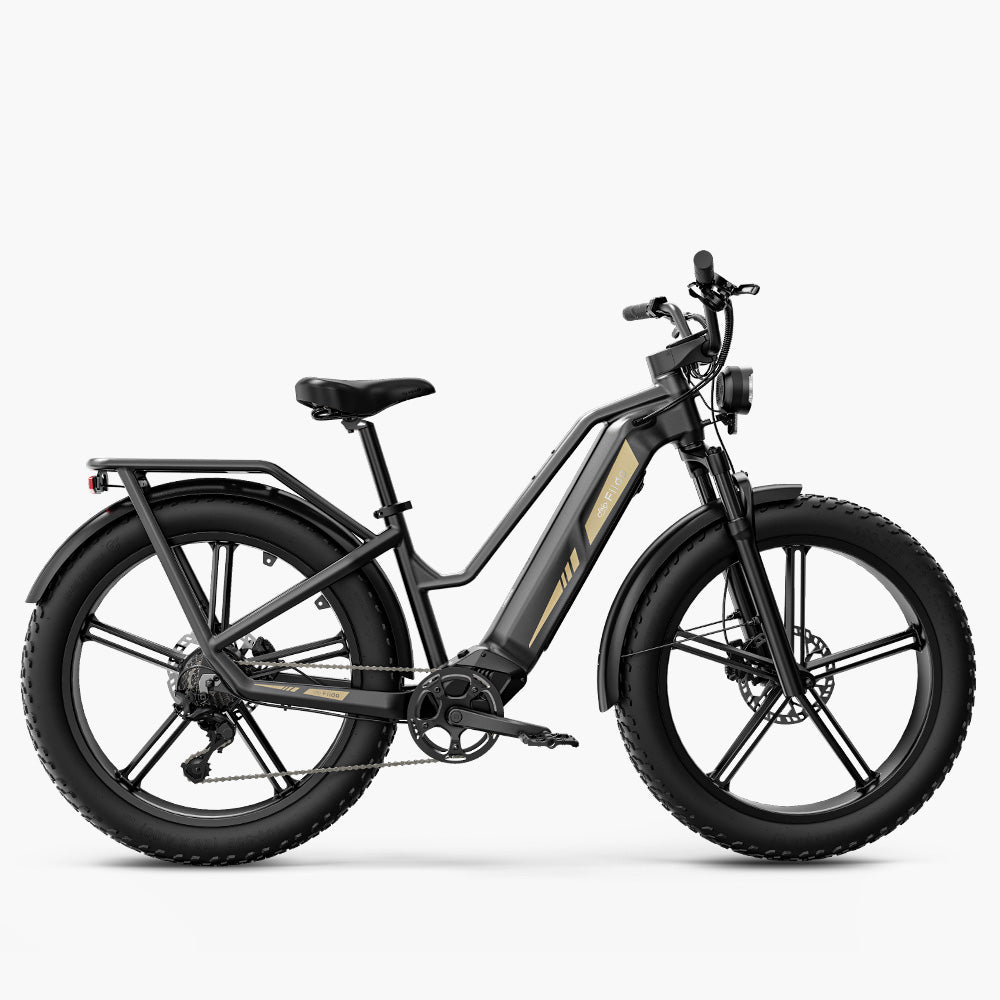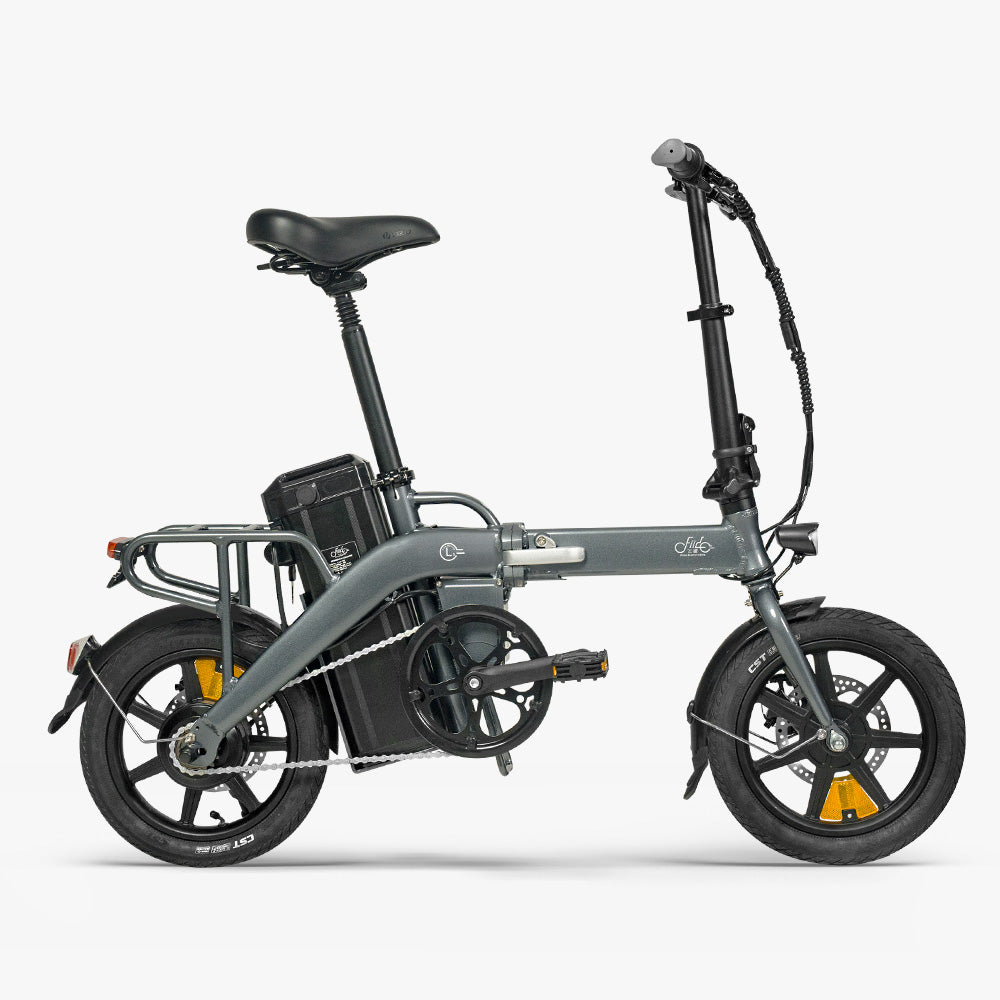Choosing an electric bike is not just about the design or the motor; the battery is one of the most critical aspects to consider. It determines how far you can go, how long it will last, and ultimately the kind of experiences you can have on your e-bike. Let’s delve deep into the question of battery life, covering everything from types of batteries to tips on extending their lifespan.
E-Bike Battery Types and Lifespans
The electric bike battery landscape is diverse, with each type offering distinct advantages and disadvantages that affect overall performance and longevity
1.Lithium-ion (Li-ion) Batteries:Lithium-ion batteries dominate modern e-bike use due to their superior energy density, lightweight build, and minimal memory effect, which allows for efficient recharging without loss of capacity. They consist of lithium compounds that facilitate rapid energy release and recharging. These batteries also have built-in Battery Management Systems (BMS) to prevent overcharging and overheating, which further extends their usability. Compared to older technologies, they exhibit excellent charge retention and efficiency in energy output.
Estimated Lifespan: 3-5 years
Typically, lithium-ion batteries endure 500-1000 full charge cycles, offering around 3-5 years of regular use based on factors like charging habits, temperature, and overall maintenance.
NiMH batteries offer a compromise between performance, cost, and environmental safety. They use a chemical reaction between hydrogen and nickel oxide hydroxide to store energy, providing decent power output. However, they are heavier and suffer from the "memory effect," meaning improper charging can reduce their capacity over time. NiMH batteries are more durable in fluctuating temperature environments compared to lithium-ion but require more frequent care to ensure optimal performance.
Estimated Lifespan: 2-4 years
With 400-500 charge cycles, NiMH batteries tend to last approximately 2-4 years of use, depending on maintenance and charging precision.
Lead-acid batteries were one of the earliest types of rechargeable batteries used for e-bikes. They store energy using lead dioxide and sponge lead submerged in sulfuric acid, making them extremely heavy and cumbersome. While affordable, their energy density is low, which means they provide less range for their weight. Lead-acid batteries also have a high rate of self-discharge, meaning they lose stored energy even when not in use, and are prone to sulfate build-up, which shortens their lifespan.
Estimated Lifespan: 1-2 years
Typically, lead-acid batteries endure 200-300 charge cycles, which translates to about 1-2 years of use. They degrade faster without consistent maintenance, including avoiding complete discharges and keeping the battery topped up regularly.
Key Components That Influence Battery Life
The overall battery lifespan is determined by more than just the type of battery. Various components of the e-bike itself also play an integral role:
How Do E-Bike Batteries Work? E-bike batteries work by storing energy in chemical form, which is then converted into electrical energy to power the bike's motor. Most e-bike batteries use a series of lithium-ion cells, which are grouped together to form a battery pack. When you pedal or use the throttle, the battery supplies power to the motor, helping propel the bike forward. The battery management system (BMS) ensures the safe operation of these cells by regulating voltage, preventing overheating, and managing the charge-discharge cycle. Understanding the working mechanism helps in appreciating why certain components and care measures are crucial to prolong battery life.
-
Battery Management System (BMS):
The BMS is a vital component that helps protect the battery from overcharging, undercharging, overheating, and short circuits. A quality BMS will help extend the battery’s life by ensuring it operates within safe parameters. -
Motor Power:
The power of the motor (measured in watts) impacts how much strain is put on the battery. Higher-powered motors drain the battery faster, reducing the number of charge cycles it can undergo over its lifetime. Riders should match motor power with their intended riding style to optimize battery use. -
Controller:
The controller determines how the battery power is distributed to the motor. A well-designed controller helps ensure that power is delivered smoothly and efficiently, thus extending battery life.
How to Monitor Battery Health
Monitoring battery health ensures that you can detect issues before they lead to significant capacity loss.
Signs of Decline:
- Reduced Range: The distance you can travel on a full charge significantly decreases.
- Longer Charging Time: The time it takes to fully charge the battery increases noticeably.
- Battery Overheating: The battery becomes unusually hot during charging or riding.
- Faster Power Drain: Battery level drops quickly, even when not in use.
- Unstable Power Output: Fluctuating power during rides, with inconsistent pedal-assist performance.
- Inability to Fully Charge: The battery never reaches 100%, no matter how long it’s charged.
- Unusual Odor: A sulfur or "rotten egg" smell comes from the battery.
If you notice these signs, it's advisable to check the battery's condition to prevent further damage and ensure safety.

Tips to Extend Battery Life
-
1. Avoid Full Discharges
Fully discharging the battery can speed up degradation, so it’s a good idea to keep the battery level between 20-80%. This helps reduce wear and tear on the battery.Tips:
- Avoid letting the battery level drop to zero. Start charging when the battery is around 20%.
- Make a habit of regularly charging your battery instead of waiting for it to be fully drained.
2. Store the Battery Properly
Maintaining the right charge level when storing the battery long-term can reduce its aging. If you need to leave your e-bike idle for a while, keep the battery charge at around 50% and store it in an ideal environment.Tips:
- Store the battery in a cool, dry place, avoiding areas with drastic temperature changes, like garages or outdoor sheds.
- Check the battery charge every 1-2 months, and recharge to 50% if needed.
3. Temperature Management
Extreme temperatures can negatively impact the battery. Very cold or hot conditions can damage the internal chemistry, shortening the battery’s lifespan.Tips:
- Avoid charging the battery in environments below 0°C (32°F) or above 40°C (104°F).
- Whenever possible, charge the battery at room temperature (around 20-25°C) to keep it safe.
- During winter, avoid storing the battery outdoors in the cold; bring it indoors to maintain optimal temperature.
4. Ride in Moderation
Using pedal assist instead of full throttle can help extend battery life. Full throttle puts more stress on the battery and drains power faster.Tips:
- Opt for lower or medium power assist modes to save battery.
- Use lower assist levels on flat terrain and increase assistance only for hills or accelerations.
- When possible, try pedaling without assistance for parts of your ride to reduce strain on the battery.
5. Maintain the Battery Regularly
The physical condition of the battery and its connections can affect performance. Regular maintenance helps minimize performance drops and unexpected issues.Tips:
- Every few months, check the battery terminals for signs of corrosion. Corrosion can reduce the battery's efficiency and lifespan.
- Ensure the connection wires are secure to avoid loose contacts. If you notice rust on the terminals, gently clean them with a soft cloth.
- Check the battery casing for any cracks or damage; contact a professional if any issues are found.
6. What to Do When Battery Health Declines
Over time, battery health may decline, leading to reduced range, longer charging times, or overheating. These signs suggest the battery needs extra care.Tips:
- Reduce High-Load Use: Avoid frequent high-load activities like full throttle riding or climbing steep hills, as this accelerates battery degradation.
- Maintain Ideal Storage Conditions: When the battery is in poor condition, make sure to store it in a stable, temperature-controlled environment.
- Consult a Professional: If the battery's performance keeps deteriorating, consider consulting the manufacturer or a repair professional for an inspection, and possibly replace the battery if needed.
By managing charging habits, storage conditions, and riding style in a scientific and reasonable way, you can significantly extend the life of your e-bike battery, maximizing its value. Not only will this reduce how often you need to replace the battery, but it will also ensure a safer and more enjoyable ride.For more tips on maintaining an e-bike battery, you can watch this link: https://fiido.com/blogs/e-bikes/taking-care-of-your-e-bike-battery-the-ultimate-guide
Introducing Fiido Electric Bike Batteries
Fiido has developed a range of electric bikes that stand out for their innovative battery technology, providing both longevity and reliable performance. Let's explore two outstanding Fiido models renowned for their battery efficiency:
-
Fiido Titan
The Fiido Titan off-road electric bike comes equipped with a high-capacity battery that supports extended riding sessions. Its battery is designed to endure up to 1200 full charge cycles, making it an excellent choice for riders who want to explore more without frequent recharges. The large battery capacity also means that riders can comfortably tackle challenging routes without worrying about power.Fiido Titan Robust Cargo Electric Bike
$1,499.00 $1,699.00Learn MoreA powerhouse with a 248-mile range and 4-piston brakes, ideal for hunting and fishing trips.
- Battery Capacity: 696Wh
- Range: Up to 248 km per charge(Includes Extender Battery), depending on riding conditions.
-
Charging Time: 7-9 hours.
-
Fiido L3
The Fiido L3 Long Range Electric Bike is a fantastic option for those who value an impressive range in a compact design. The battery used in the L3 is optimized for long-distance commuting, and its compact nature makes it ideal for those looking for portability without sacrificing performance.Fiido L3 Long Range Electric Bike
$799.00 $999.00Learn moreLongest range folding electric bike under $1000.
- Battery Capacity: 1113.6Wh
- Range: Up to 125 km on a single charge, suitable for multiple days of commuting.
- Charging Time: 6-8 hours.
Both the Titan and L3 are built with lithium-ion batteries, which are well-regarded for their light weight, high energy density, and long lifespan. These batteries feature advanced BMS, ensuring they last longer and provide consistent performance throughout their lifespan. The lithium-ion technology used in Fiido batteries makes them a top choice for efficient and reliable electric bikes, offering a longer range and more efficient power output compared to other battery types.
Conclusion
The longevity of an e-bike battery depends on a multitude of factors, from battery type and components to how it is used and maintained. Understanding these variables can significantly extend the lifespan of your battery, ensuring you get the best value from your e-bike investment. Fiido’s advanced battery technology, as seen in models like the Titan off-road electric bike and L3, sets a high standard for reliability and long-distance performance, providing an excellent balance of capacity and practicality. The batteries in these models are designed to last up to 1200 full charge cycles, translating to a lifespan of approximately 4-6 years with proper care.















